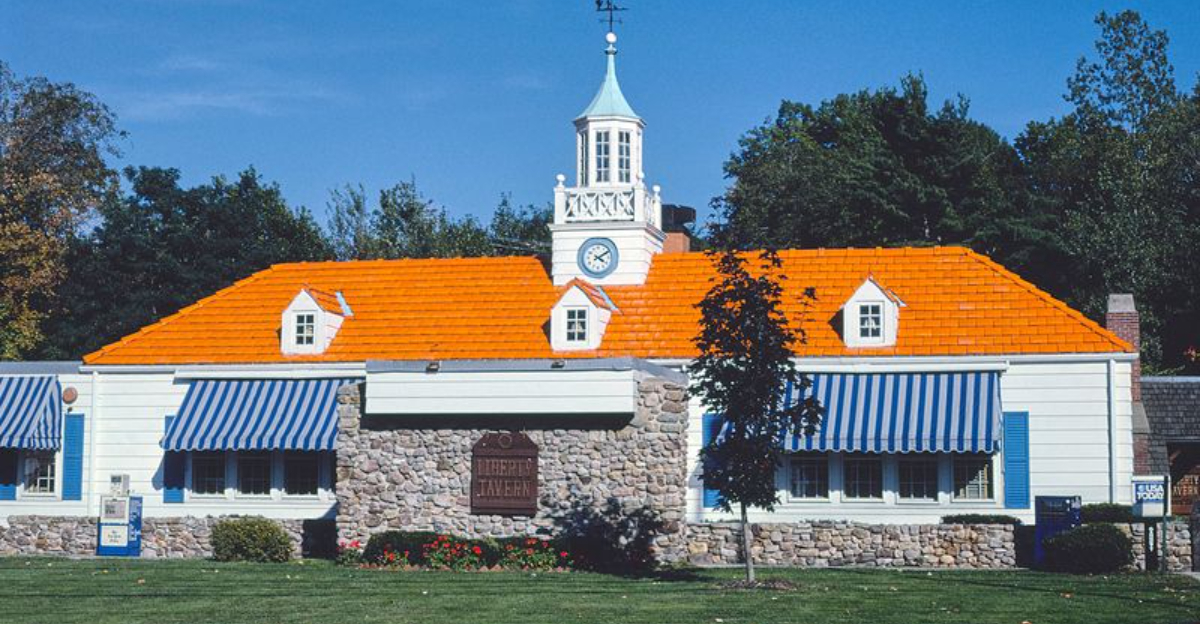12 Defunct New York Chains No One’s Shedding Tears Over

Not every restaurant chain gets a standing ovation when it closes its doors. Some vanish quietly, leaving behind little more than a shrug or a “Remember them?” moment.
In a city that never sleeps, New York has seen its fair share of dining experiments that just didn’t stick.
From forgotten flavors to spots that never quite caught on, these chains slipped away without a fuss and definitely without any heartbreak.
1. Beefsteak Charlie’s: All-You-Can-Eat Mediocrity
Remember that slogan “You’re gonna get spoiled”? Spoiled with disappointment, maybe. Beefsteak Charlie’s lured customers with unlimited shrimp and salad bar promises while delivering barely passable steaks.
Founded in 1976, this chain expanded rapidly across NYC before collapsing under the weight of its own mediocrity.
The all-you-can-eat concept attracted college students and budget-conscious families, but the quality never justified even those low prices.
2. Childs Restaurants: Pioneering Blandness Since 1889
Once upon a time, Childs dominated New York’s dining scene with over 100 locations in the city alone.
These pioneers of fast food standardization served up pancakes and eggs with assembly-line efficiency and soul-crushing sameness.
The white-tiled interiors and uniformed waitresses created an antiseptic dining experience that somehow lasted until the 1960s.
While historically significant as America’s first large restaurant chain, nobody’s waxing nostalgic about their watery oatmeal or rubbery eggs.
3. Chock full o’Nuts: Coffee Shops That Weren’t About Coffee
Started as a nut stand in 1926, Chock full o’Nuts morphed into a coffee shop chain with a weird identity crisis.
Their signature nutted cream cheese sandwich on raisin bread still haunts the nightmares of New Yorkers who were brave enough to try it. The chain’s jingle was catchier than anything on their menu.
By the time they shuttered most locations in the 1980s, the dated decor and confused concept (was it a coffee shop or a lunch counter?) left few loyal fans.
4. Dubrow’s Cafeteria: Self-Service Sadness
Walking into Dubrow’s meant joining a sea of elderly patrons pushing trays along stainless steel rails, eyeing vats of lukewarm meatloaf and congealed mashed potatoes. This cafeteria chain was where hope went to perish, one scoop of tapioca pudding at a time.
Brooklyn’s Jewish community kept Dubrow’s alive for decades despite the institutional food and fluorescent lighting.
When the last location closed in the 1980s, only nostalgia buffs pretended to care about the loss of those steam-table specials.
5. Fashion Café: Supermodel-Endorsed Food Failure
Supermodels selling burgers? This spectacularly misguided venture from the 1990s proved that attaching Claudia Schiffer and Naomi Campbell’s names to mediocre food couldn’t save a doomed concept.
Fashion Café lasted barely three years in Rockefeller Center. Tourists came once for the novelty and never returned after experiencing the overpriced, underwhelming menu.
The bizarre disconnect between fashion icons who didn’t eat carbs and a restaurant pushing pasta made this concept dead on arrival.
6. Horn & Hardart: The Original Vending Machine Food
Shoving nickels into slots to retrieve questionable food from little glass doors somehow seemed revolutionary in the early 1900s.
Horn & Hardart’s automat concept thrived until people realized machine-dispensed food is exactly as appetizing as it sounds.
The chain’s macaroni and cheese achieved legendary status, though mostly because it glowed an unnatural orange.
When the last NYC location closed in 1991, it marked the end of an era that modern food delivery services have wisely chosen not to resurrect.
7. Longchamps: Faux-Fancy Dining for the Masses
Longchamps masqueraded as upscale dining while serving glorified diner food on white tablecloths.
The chain’s identity crisis extended to its bizarre racetrack-themed decor that had nothing to do with its mediocre American-with-French-pretensions menu.
Founded by a Prohibition-era bootlegger, Longchamps somehow maintained 11 NYC locations until the 1970s.
Patrons in pearls would nibble uninspired chicken à la king while pretending they were somewhere fancy, a collective delusion that eventually collapsed under the weight of changing tastes.
8. Nedick’s: Hot Dogs and Regrettable Orange Drinks
Generations of New Yorkers developed mysterious orange stains on their shirts thanks to Nedick’s signature neon-colored beverage.
This hot dog and orange drink stand became a NYC institution despite serving what was essentially boiled mystery meat and liquid sugar.
Founded in 1913, Nedick’s familiar orange and white stands dotted the city, particularly near subway stations.
The chain’s gradual disappearance by the 1980s coincided with New Yorkers developing actual taste buds and the realization that hot dogs shouldn’t be the color of industrial waste.
9. Schrafft’s: Where Your Grandmother’s Grandmother Ate Lunch
Catering exclusively to ladies who lunch (and apparently nobody else), Schrafft’s built an empire on bland food and ice cream that somehow kept New York’s blue-haired set coming back for decades.
Their dining rooms resembled funeral parlors with better lighting.
Founded in 1898, Schrafft’s became famous for tea sandwiches with crusts meticulously removed and desserts that prioritized appearance over flavor.
When the chain finally collapsed in the 1970s, it took with it the last vestiges of formal midday dining where wearing gloves was practically mandatory.
10. Danube: David Bouley’s Forgotten Austrian Experiment
Gold leaf ceilings and Klimt-inspired decor couldn’t save this overly ambitious Austrian restaurant from becoming a spectacular financial disaster.
Danube opened in 2000 to critical acclaim but quickly became known for emptying wallets faster than it filled stomachs.
Chef David Bouley created an opulent Viennese fantasy in Tribeca that few could afford to visit regularly.
The combination of economic downturn and overly precious $42 Wiener schnitzel led to its closure in 2008, leaving behind nothing but faded memories of overpriced strudel and buyer’s remorse.
11. Tad’s Steaks: Budget Beef Bonanza Gone Bad
Remember those $1.99 steak dinners that somehow always looked better on the neon-lit signs than on your plate?
Tad’s Steaks mastered the art of disappointment, serving paper-thin, gray-colored meat that required Olympic-level jaw strength to chew through.
The chain’s Times Square location became infamous for its sticky floors and the mysterious meat that barely qualified as steak. Tourists lined up for the bargain prices while New Yorkers knew better.
Founded in 1957, Tad’s gradually disappeared from NYC streets, with its final Manhattan location closing in 2019.
12. Howard Johnson’s: Orange-Roofed Roadside Regrets
The distinctive orange roof once signaled roadtrip refuge for travelers, but Howard Johnson’s final NYC location closed without fanfare.
Those 28 ice cream flavors couldn’t save a chain that time simply passed by.
HoJo’s bland food became a running joke – where else could you find fried clams, ice cream, and macaroni and cheese all prepared with the exact same flavor profile?
The chain peaked with over 1,000 locations but couldn’t adapt when competitors raised the bar on roadside dining.
